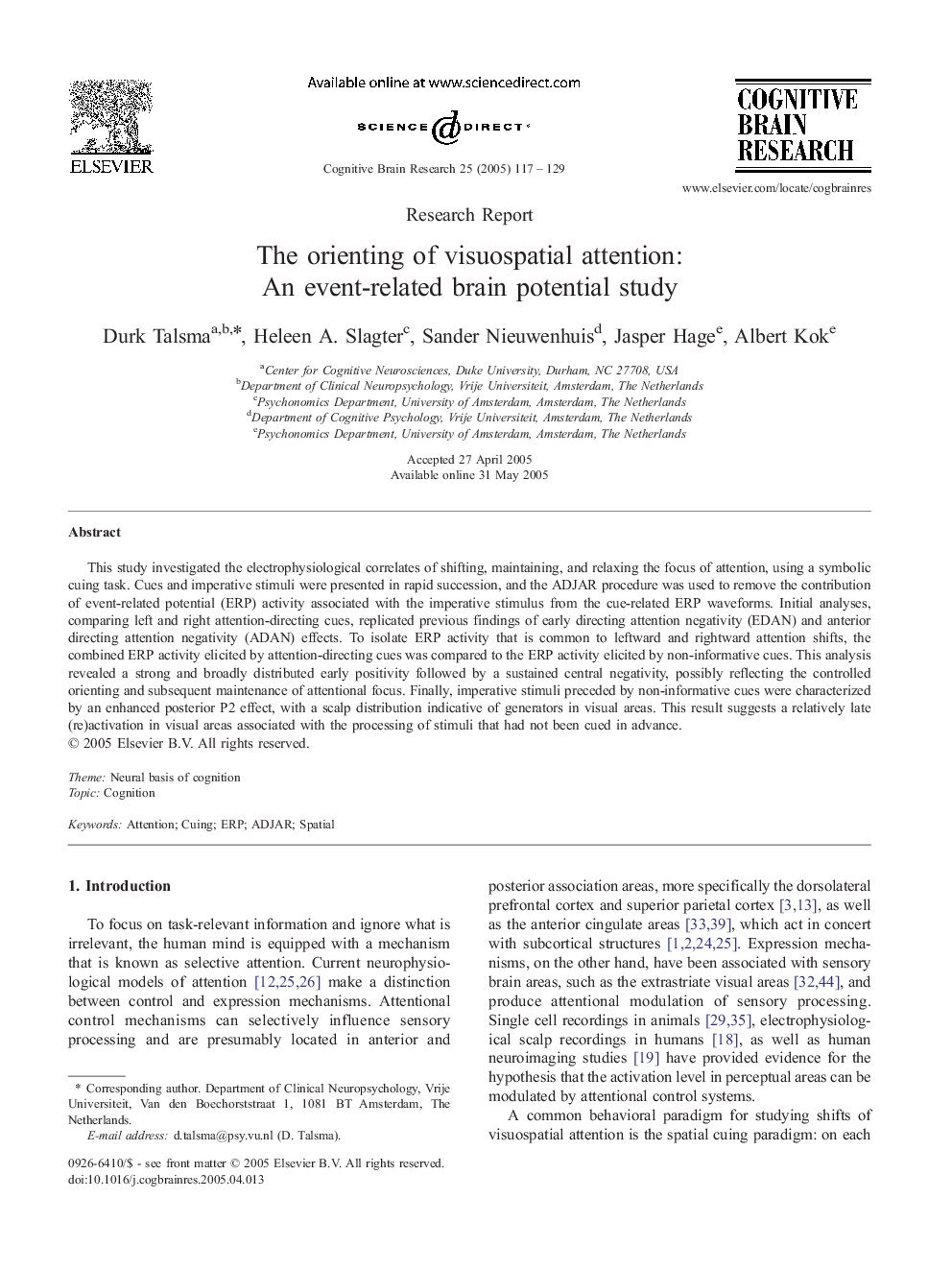| Article ID | Journal | Published Year | Pages | File Type |
|---|---|---|---|---|
| 9408059 | Cognitive Brain Research | 2005 | 13 Pages |
Abstract
This study investigated the electrophysiological correlates of shifting, maintaining, and relaxing the focus of attention, using a symbolic cuing task. Cues and imperative stimuli were presented in rapid succession, and the ADJAR procedure was used to remove the contribution of event-related potential (ERP) activity associated with the imperative stimulus from the cue-related ERP waveforms. Initial analyses, comparing left and right attention-directing cues, replicated previous findings of early directing attention negativity (EDAN) and anterior directing attention negativity (ADAN) effects. To isolate ERP activity that is common to leftward and rightward attention shifts, the combined ERP activity elicited by attention-directing cues was compared to the ERP activity elicited by non-informative cues. This analysis revealed a strong and broadly distributed early positivity followed by a sustained central negativity, possibly reflecting the controlled orienting and subsequent maintenance of attentional focus. Finally, imperative stimuli preceded by non-informative cues were characterized by an enhanced posterior P2 effect, with a scalp distribution indicative of generators in visual areas. This result suggests a relatively late (re)activation in visual areas associated with the processing of stimuli that had not been cued in advance.
Related Topics
Life Sciences
Neuroscience
Behavioral Neuroscience
Authors
Durk Talsma, Heleen A. Slagter, Sander Nieuwenhuis, Jasper Hage, Albert Kok,
